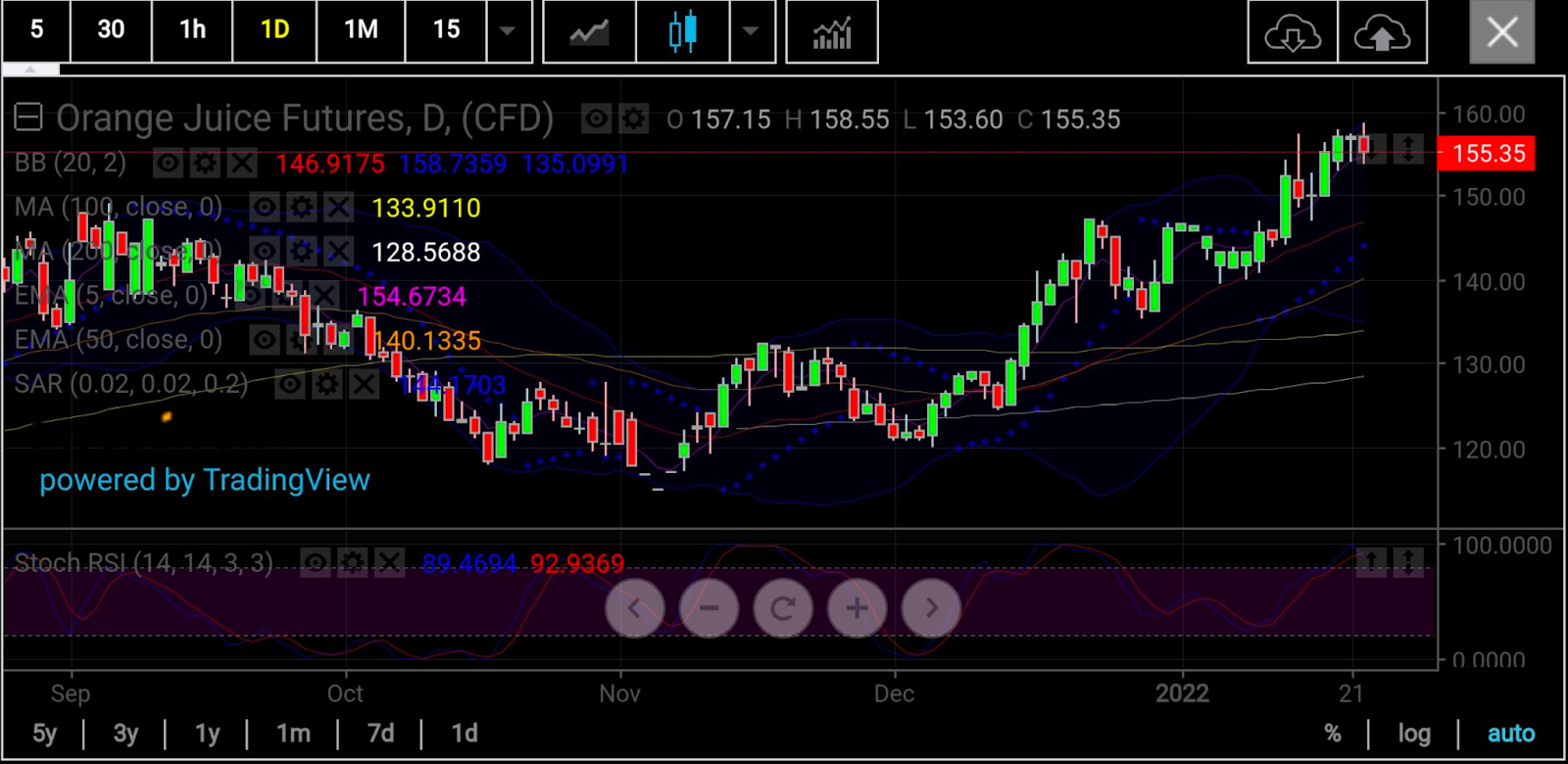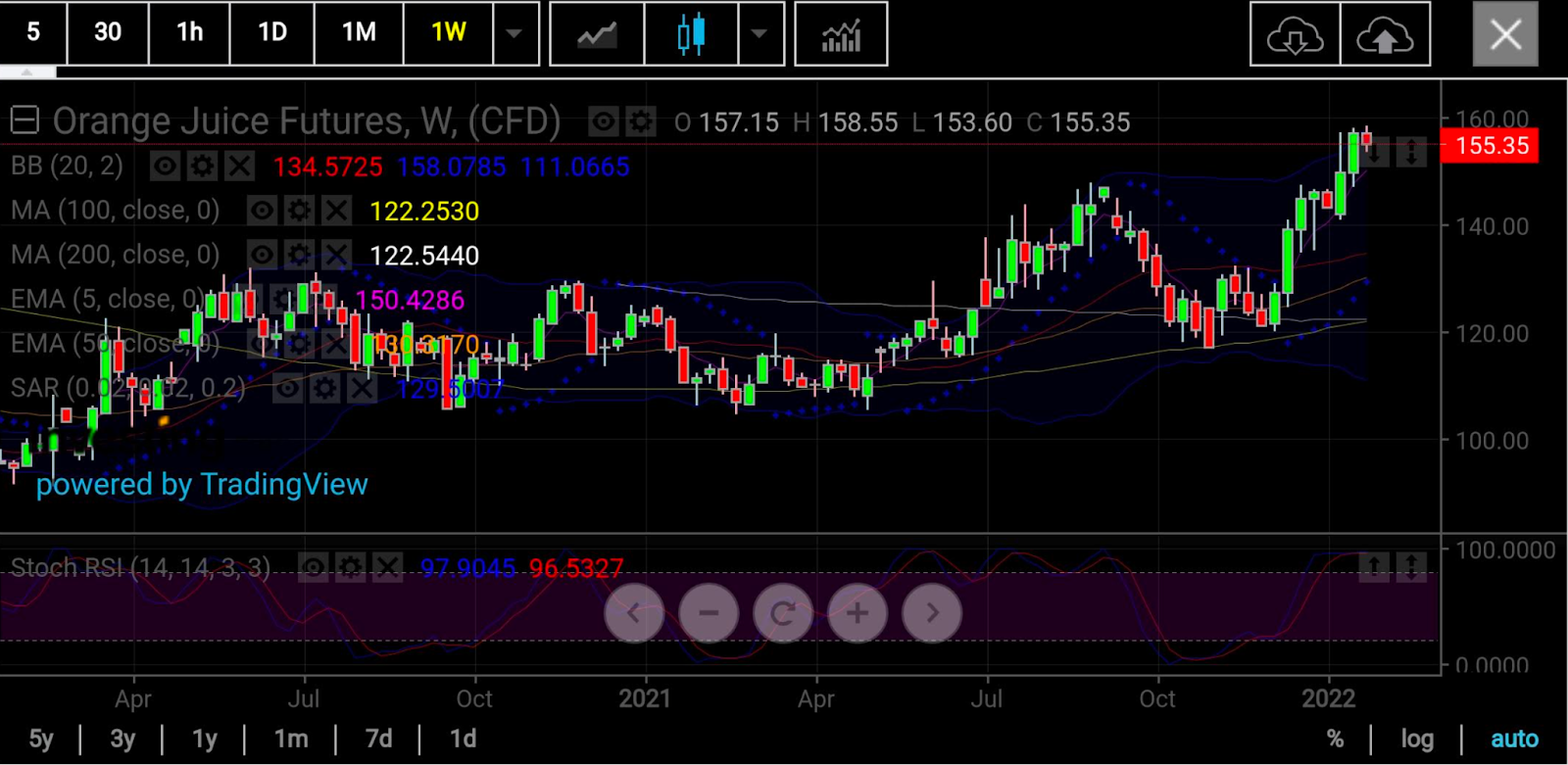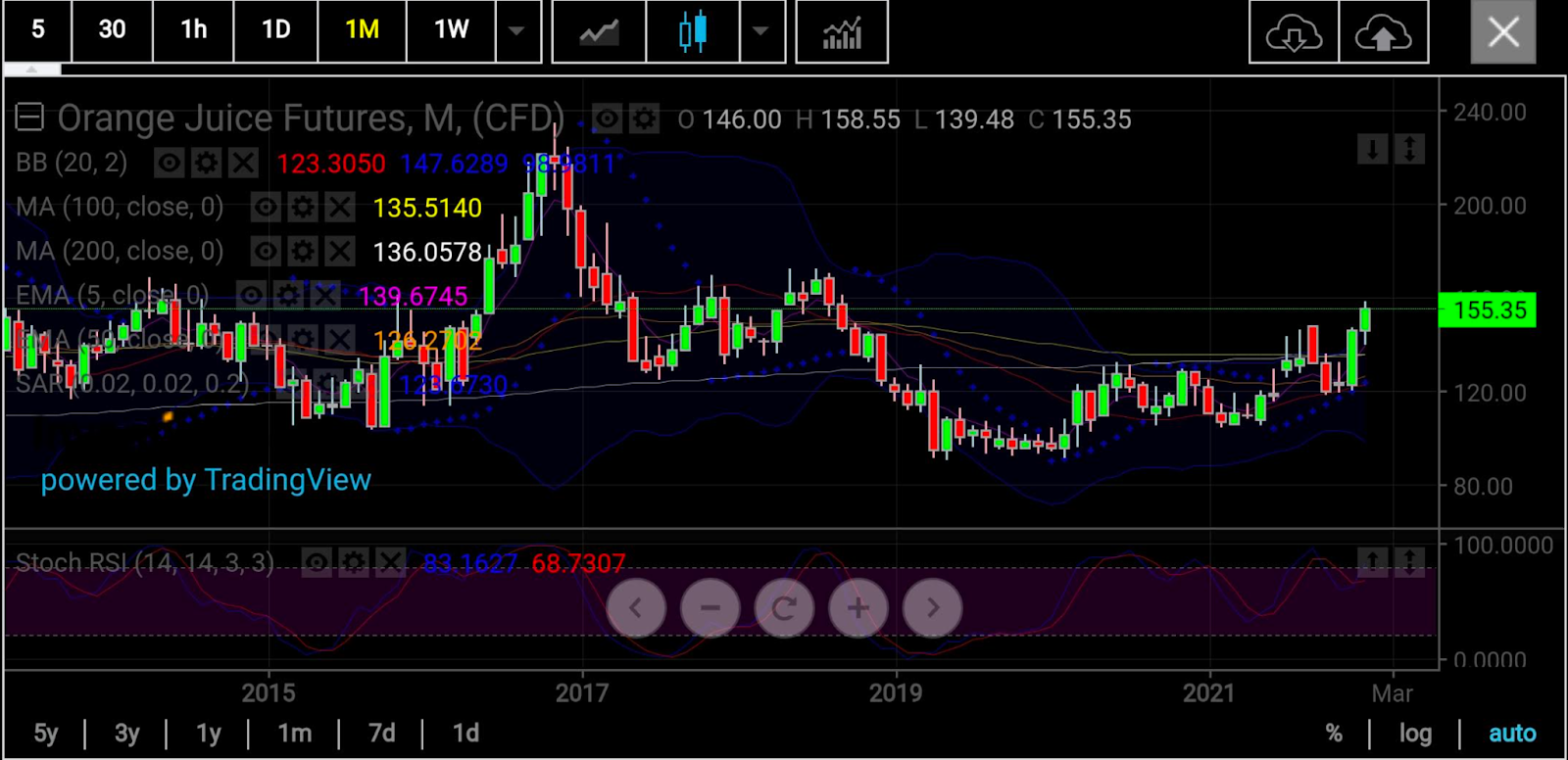The 'gold' picked from the trees could get even costlier.
The US state of Florida is forecast to have its smallest orange crop in decades, bumping up a rally in juice prices.
Frozen concentrated orange juice settled at $1.5538 per lb on ICE Futures US on Monday, up more than 6% for January after a rally that had seen seven out of ten days of gains. That follows December’s 19% rally—the biggest in six years—and November’s more modest 2% gain.

All charts courtesy of skcharting.com
For all of 2020, OJ—as it’s known in trade circles—rallied 87% as the COVID-19 pandemic disrupted orange harvesting and juice production at farm-factory level. There was also a surge in demand for juice among Americans, who raided supermarket shelves in search of healthier foods during the pandemic.
While there was relatively less juice-binging last year, OJ still gained almost 20% as it remained a breakfast staple.
Higher OJ costs did not result in pricier juice on supermarket shelves in 2020 as major US juice bottlers such as PepsiCo (NASDAQ:PEP)-owned Tropicana, Naked Juice and Coca-Cola's (NYSE:KO) Simply Orange absorbed the pain without passing it on to consumers.
But 2021 has proven to be a different story, with almost every food manufacturer raising prices, evidenced by the 7% rise in the Consumer Price Index during the year to December—the highest in 40 years.
And this year’s 6% gain in OJ has probably more to go, given the crop crunch and technical indicators, say those in the game.
“There appears to be speculative buying in OJ, primarily based on inflation concerns,” said Jack Scoville, chief crop analyst at Chicago’s Price Futures Group.
“The trends are also still up on the daily charts, along with the reduced Florida orange production estimates from last week”

The US Department of Agriculture, in its latest outlook on Florida’s oranges, forecast that growers in the state would produce enough to fill 44.5 million 90-pound boxes, the common industry measurement.
That was down from a projection of 46 million boxes in December.
It will also be Florida’s smallest orange crop since World War II, Louis Schacht, joint-owner of Schacht Groves, one of the growers of the fruit in the state, told the state’s 12 News network. Adding:
"It's the signature crop of Florida. It's our second biggest industry and to be in it, it's troubling for sure."
Schacht blamed the reduced output on the citrus greening that had affected Florida’s orange crop over the past year.
Citrus greening is resultant from a bacteria that stunts the growth of oranges, leaving them green and bitter to the taste. It also weakens orange trees to the point where they're no longer capable of producing fruit.
Most of Florida’s oranges are processed into orange juice.
The US Department of Agriculture had initially projected Florida growers would produce enough oranges for 47 million boxes during the current season, after 52.8 million boxes were filled during the 2020-2021 season.
Bitingly-cold temperatures in Florida were also hitting orange trees, said Price Group Futures’ Scoville, who cited the arrival of the state’s freeze season that nullified intermittent rains and warm temperatures that nurtured the crop.
Florida aside, in Brazil—the world’s largest grower of the citrus crops that produce juice—the weather was dry during flowering time, followed by a freeze just before harvest, Scoville said.

OJ’s fundamentals look as promising as they can be for the crop’s pricing, but what about its technicals?
OJ’s monthly charts show a clear and strong breakout above $1.48 per lb, after a long consolidation that has left the commodity trading at multi-year highs, noted Sunil Kumar Dixit, technical strategist at skcharting.com.
“Like every rising commodity, OJ is likely to take a break and the distribution of momentum may be seen in the near term with a retest of its breakout point before the resumption of the primary uptrend,” said Dixit.
Despite their rally through January, OJ’s daily and weekly charts were showing that a natural correction may have started from the $1.56 peak for the year.
“Prices may retest the middle Bollinger Band of $1.47 and 50-Day Exponential Moving Average of $1.40 on the daily chart. Broadly speaking, OJ should hold above $1.40-$1.37 in order to keep pace with the primary uptrend.”
Disclaimer: Barani Krishnan uses a range of views outside his own to bring diversity to his analysis of any market. For neutrality, he sometimes presents contrarian views and market variables. He does not hold a position in the commodities and securities he writes about.
